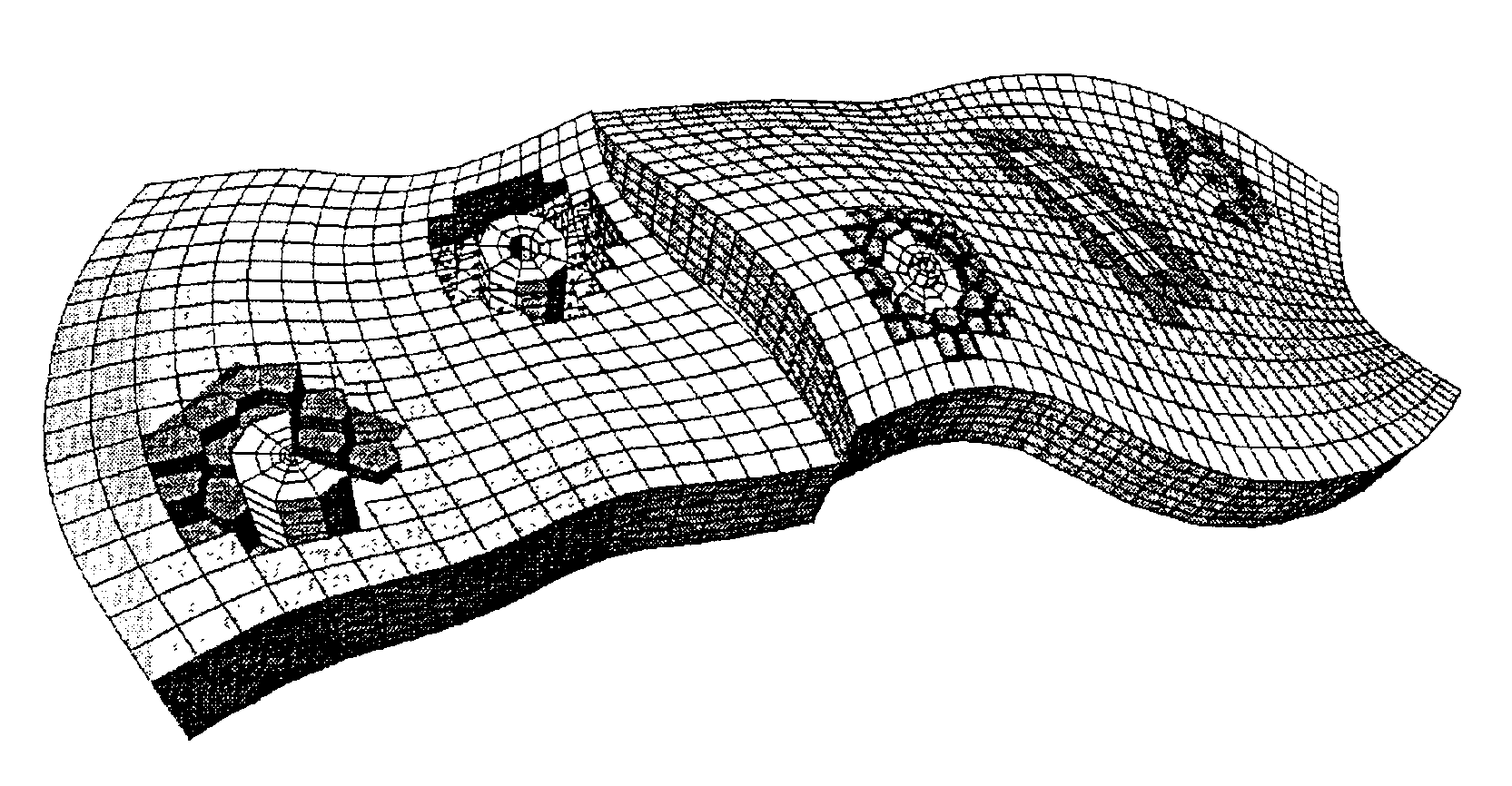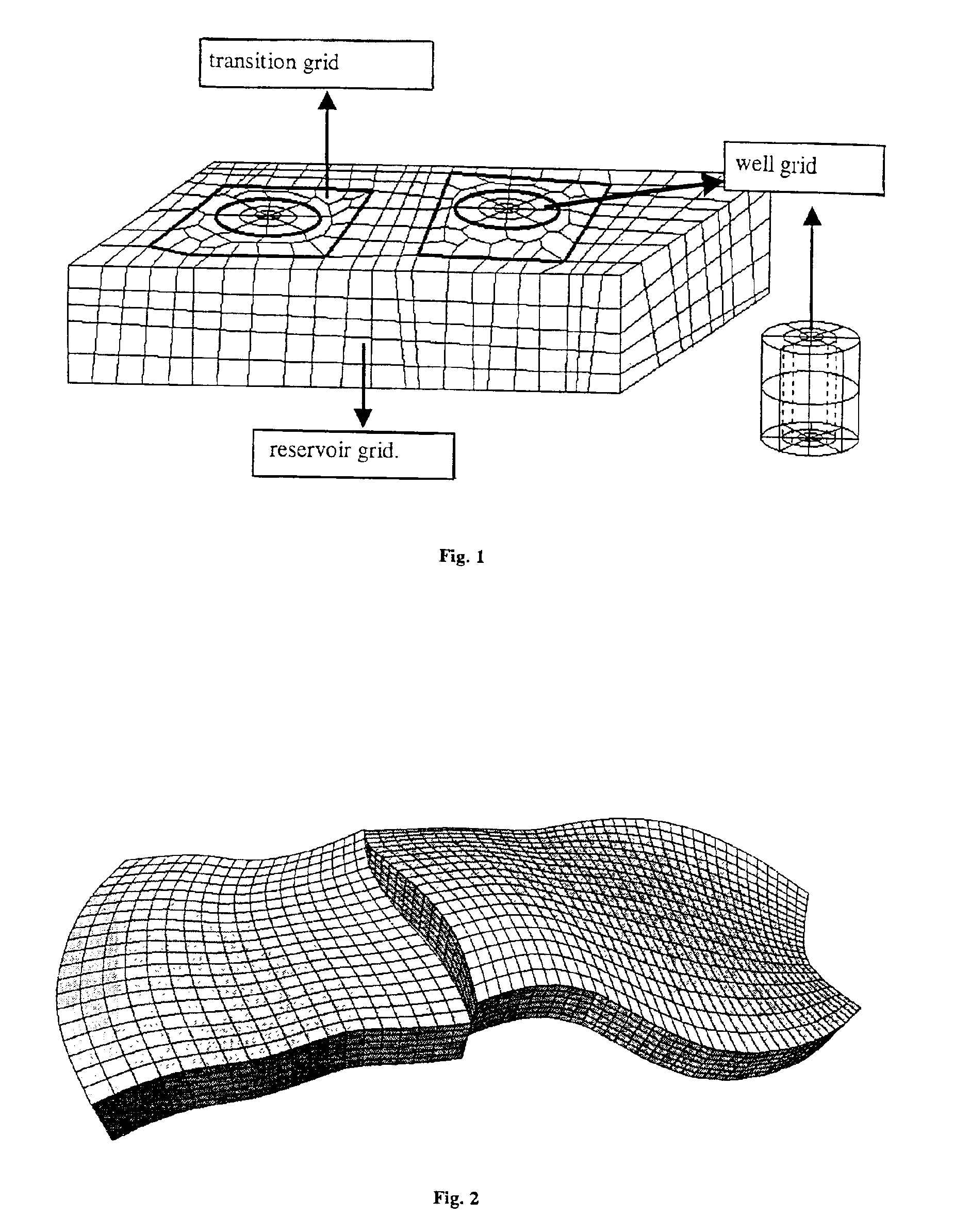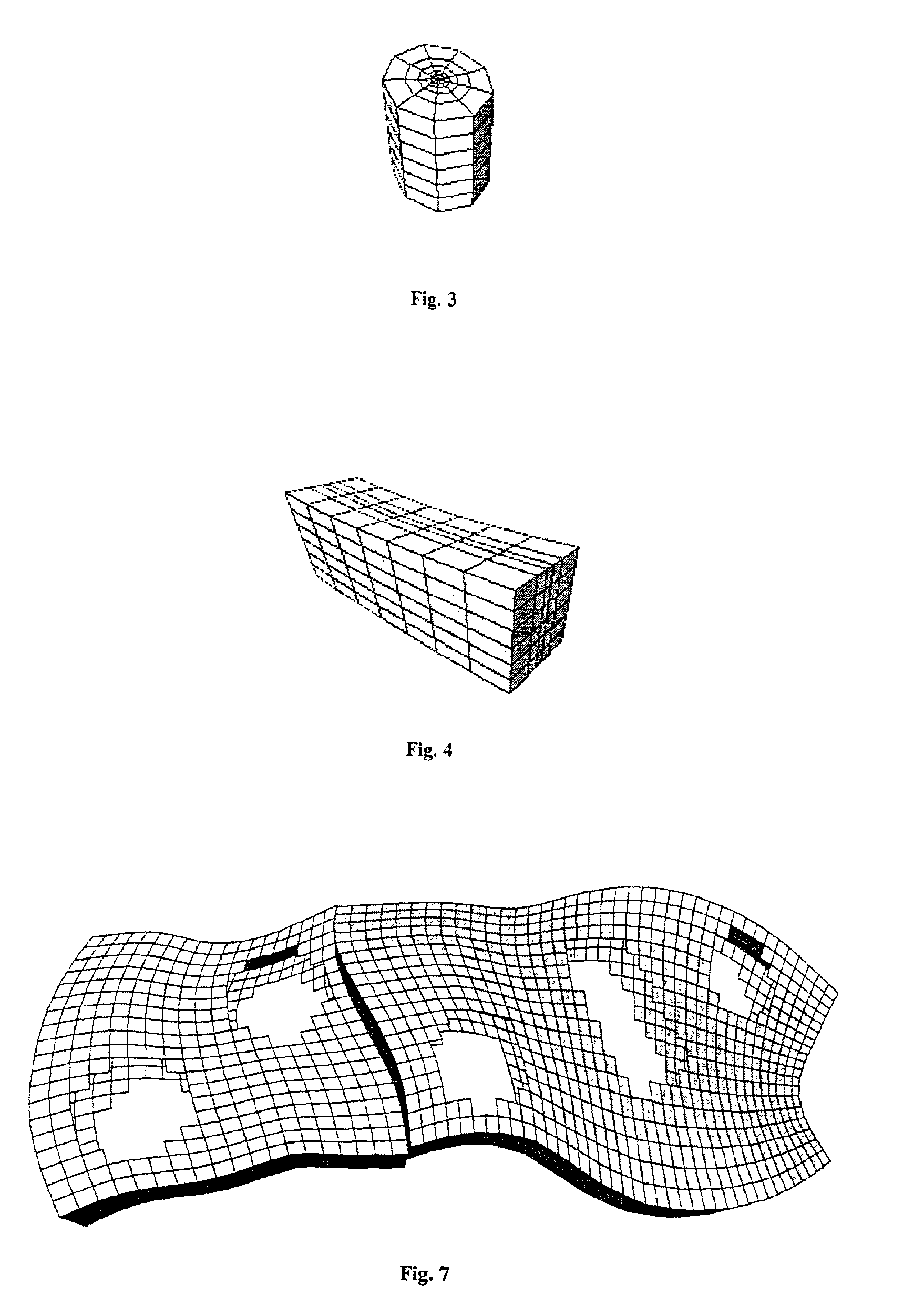Method of generating a hybrid grid allowing modelling of a heterogeneous formation crossed by one or more wells
a hybrid grid and well technology, applied in the field of hybrid grid generation, can solve the problems of inability to apply grid technology used in the other field, inaccurate, petroleum sphere,
- Summary
- Abstract
- Description
- Claims
- Application Information
AI Technical Summary
Benefits of technology
Problems solved by technology
Method used
Image
Examples
Embodiment Construction
[0037]Modelling of the reservoir is obtained by combining elementary grids of different types. Each grid is considered to be a full object with its own data model, its own generation methods and its own representation methods. Generation is carried out in stages with addition / subtraction of grids.
[0038]1) In order to represent the reservoir as a whole, an i, j, k structured grid of a known type, referred to as CPG (Comer Point Geometry), as described in the aforementioned French patent 2,747,490 for example is used. The reservoir can be faulted with downcreep of a block in relation to the other. The major horizons and faults are first modelled by continuous surfaces from data resulting from an interpretation of seismic images of the subsoil or from data obtained during drilling (well markers). The geologic structure is then divided into faulted blocks resting on these surfaces. These blocks are individually gridded, then reassembled. Gridding of a block first consists in gridding th...
PUM
 Login to View More
Login to View More Abstract
Description
Claims
Application Information
 Login to View More
Login to View More - R&D
- Intellectual Property
- Life Sciences
- Materials
- Tech Scout
- Unparalleled Data Quality
- Higher Quality Content
- 60% Fewer Hallucinations
Browse by: Latest US Patents, China's latest patents, Technical Efficacy Thesaurus, Application Domain, Technology Topic, Popular Technical Reports.
© 2025 PatSnap. All rights reserved.Legal|Privacy policy|Modern Slavery Act Transparency Statement|Sitemap|About US| Contact US: help@patsnap.com



